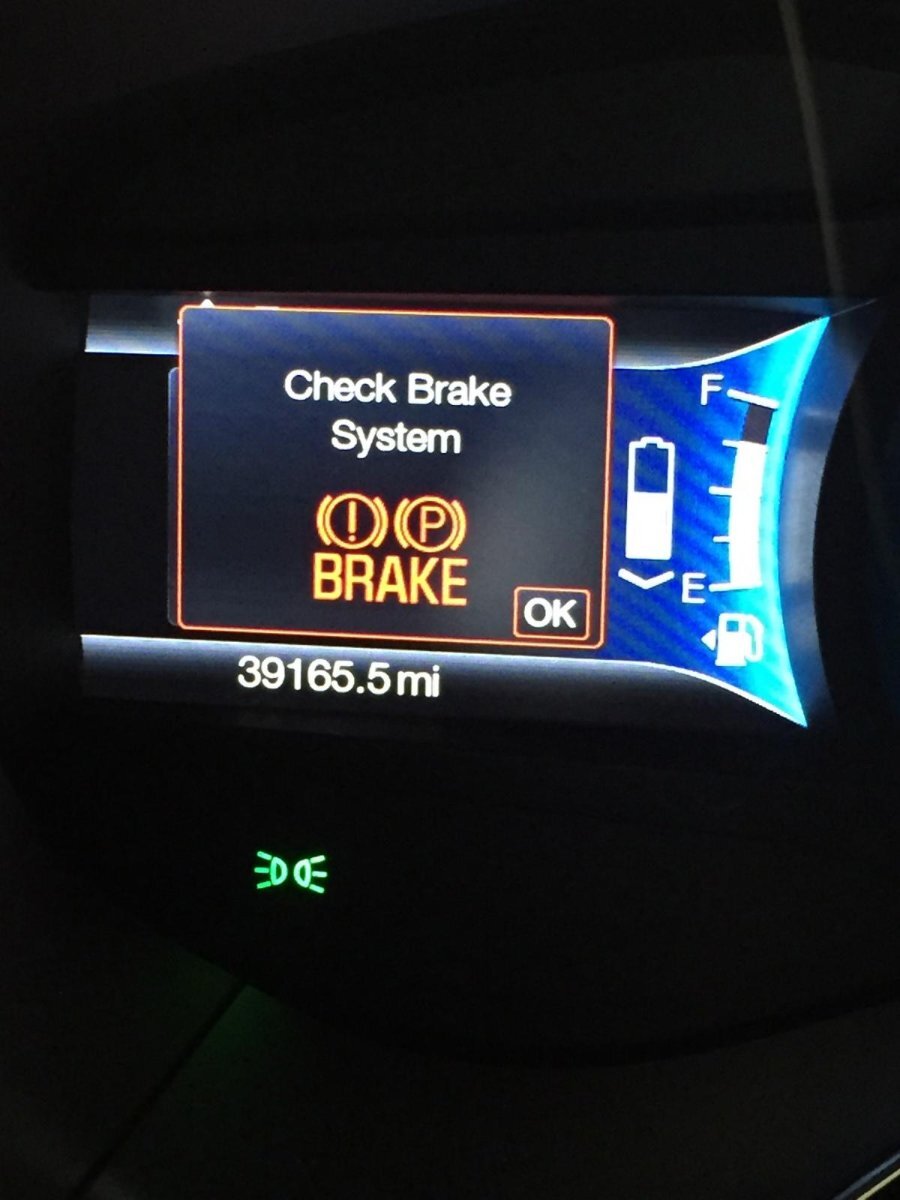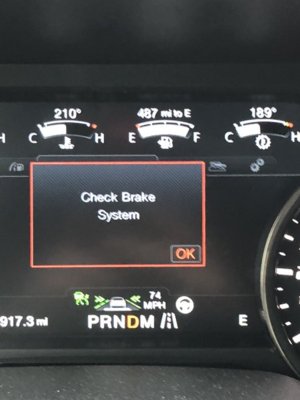How to Check Brake System
To check the brake system, inspect brake pads, fluid level, leaks, and listen for unusual noises. Proper maintenance is crucial to ensure safety on the road.
Checking your brake system regularly can help prevent accidents and keep your vehicle in top condition. Maintaining a healthy brake system is essential for safe driving. Regularly assessing your brakes can help identify potential issues before they become major problems.
By following simple inspection steps and listening for any unusual sounds, you can ensure your brake system is functioning properly. A well-maintained brake system not only enhances safety but also prolongs the lifespan of your vehicle. In this guide, we will delve into the importance of checking your brake system and provide easy-to-follow steps for routine maintenance.
1. Signs Of Brake System Problems
When it comes to your vehicle’s safety, the brake system plays a critical role. Recognizing the signs of brake system problems is essential for ensuring your safety on the road. By being aware of the indicators of potential issues, you can proactively address any problems, preventing potentially dangerous situations.
1.1 Strange Noises
One of the most common signs of brake system problems is strange noises while braking. Squeaking, grinding, or squealing sounds can indicate worn-out brake pads or damaged rotors. Ignoring these sounds can lead to further damage to the braking components, potentially compromising your ability to stop abruptly when needed.
1.2 Leaking Fluid
Another signal of potential brake system issues is leaking fluid. Leakage around the wheels or under the car can indicate problems with the brake lines, calipers, or cylinders. It’s crucial to address any brake fluid leaks promptly to prevent a complete brake failure.
1.3 Spongy Brake Pedal
A soft or spongy brake pedal can be a clear indication of air or moisture in the brake lines. This can significantly reduce the braking efficiency and response time, posing a serious safety concern. If you notice a spongy feeling when pressing the brake pedal, it’s essential to have your brake system inspected immediately.

Credit: fordcmaxhybridforum.com
2. Visual Inspection
Visual inspection of your brake system can play a crucial role in ensuring your safety on the road. It involves checking brake pads, inspecting brake lines, and examining brake calipers to identify any signs of wear and tear.
2.1 Checking Brake Pads
Brake pads are a vital component of your braking system. To check them, look through the openings in your wheel rims to inspect the thickness of the pads. If they are less than a quarter-inch thick, it’s time to replace them.
2.2 Inspecting Brake Lines
Brake lines are responsible for transmitting brake fluid to the calipers. Inspect the lines for any signs of leaks or wear. Rusty or damaged brake lines can lead to brake failure, compromising your safety on the road.
2.3 Examining Brake Calipers
Brake calipers are essential for applying pressure to the brake pads. Check the calipers for any signs of damage or irregularities. Squeaking or grinding sounds while braking could indicate a problem with the calipers.
3. Brake Fluid Check
When checking your brake system, it is important to include a brake fluid check. This ensures the fluid levels are adequate and helps maintain proper brake performance.
Checking your brake fluid is crucial for maintaining your vehicle’s braking system. Follow these steps to ensure your brakes are in optimal condition.
3.1 Locating The Brake Fluid Reservoir
Begin by locating the brake fluid reservoir under the hood of your car. Often found near the driver’s side firewall, it is a small plastic or metal container.
3.2 Inspecting The Fluid Level
Remove the reservoir cap and visually inspect the fluid level. Ensure it falls between the MIN and MAX markers on the side of the reservoir.
3.3 Checking The Fluid Condition
Check the brake fluid for any signs of contamination or deterioration. Healthy brake fluid should be clear and free of debris or dark discoloration.
4. Testing Brake Performance
Testing brake performance is essential for ensuring the safety of your vehicle. By checking the brake system, you can detect any issues and address them proactively. Here, we will discuss the key steps to evaluate your brake performance.
4.1 Performing A Brake Test
When performing a brake test, start by finding a safe and open area where you can drive your vehicle. Begin by gradually applying pressure on the brake pedal to see how the brakes respond. Listen for any unusual noises and pay close attention to the way the brakes feel. Look for any vibrations or pulling to one side as these can indicate imbalances or worn out components. Repeat this process multiple times at varying speeds to ensure comprehensive testing.
4.2 Evaluating Brake Response
The evaluation of brake response involves assessing how your brakes behave in different scenarios. Test the brakes at different speeds and inclines to gauge their performance under varying conditions. Be mindful of any delayed response or inconsistent behavior when applying the brakes, as this can signal underlying issues. Moreover, pay attention to any abnormal pedal feel, such as sponginess or stiffness, which may require further inspection.
5. Understanding Brake System Maintenance
Regular maintenance of your vehicle’s brake system is essential to ensure it works effectively and keeps you safe on the road. By understanding the key components and performing routine checks, you can prevent potential problems and extend the life of your brakes. Let’s explore three important aspects of brake system maintenance: regularly changing brake fluid, replacing brake pads, and bleeding the brakes.
5.1 Regularly Changing Brake Fluid
Brake fluid plays a crucial role in maintaining the performance of your braking system. Over time, brake fluid can become contaminated with moisture and debris, compromising its effectiveness. Regularly changing the brake fluid helps maintain proper hydraulic pressure and prevents brake failure.
To change the brake fluid, follow these steps:
- Locate the brake fluid reservoir, usually situated on the driver’s side of the engine compartment.
- Clean the reservoir cap thoroughly to prevent any contaminants from entering the system.
- Using a turkey baster or a specialized brake fluid pump, remove the old fluid from the reservoir.
- Refill the reservoir with fresh, high-quality brake fluid recommended by your vehicle’s manufacturer.
- Pump the brake pedal gently several times to allow the new fluid to circulate through the system.
- Finally, check the fluid level again and ensure it is at the appropriate level.
5.2 Replacing Brake Pads
Brake pads are essential for effective braking. Over time, brake pads wear down due to friction, necessitating replacement for optimal performance. Here’s how you can replace brake pads:
- First, raise the vehicle using a jack and secure it with jack stands.
- Remove the wheel to access the brake caliper.
- Using a wrench or socket, loosen the bolts securing the caliper and carefully remove it.
- Take out the old brake pads from the caliper bracket and inspect them for excessive wear or damage.
- If necessary, replace the brake pads with new ones of the same size and specifications.
- Reinstall the caliper and secure it with the bolts, ensuring it is aligned properly.
- Repeat the process for the other wheels, allowing enough time for the brake pads to settle.
- Finally, test the brakes by applying pressure to the pedal while driving at low speed to ensure proper functionality.
5.3 Bleeding The Brakes
Bleeding the brakes is a process that removes any air bubbles from the brake lines, ensuring optimal performance and preventing spongy brakes. Here’s how to bleed the brakes:
- Start with the wheel farthest away from the master cylinder, typically the rear passenger side.
- Open the bleeder valve using a wrench and attach a clear hose to the valve.
- Place the other end of the hose into a container partially filled with brake fluid.
- Have an assistant depress the brake pedal slowly and hold it down.
- Open the bleeder valve to allow the old brake fluid and air bubbles to escape into the container.
- Once the fluid flow stops, close the bleeder valve firmly.
- Repeat the process for each wheel, working your way closer to the master cylinder.
- Ensure the brake fluid level is maintained throughout the process to prevent air from entering the system.
By understanding regular brake system maintenance tasks such as changing brake fluid, replacing brake pads, and bleeding the brakes, you can maintain the safety and effectiveness of your vehicle’s braking system. Stay proactive and prioritize these maintenance tasks to enjoy reliable and responsive brakes every time you hit the road.

Credit: www.fordraptorforum.com

Credit: www.reddit.com
Frequently Asked Questions Of How To Check Brake System
How Do I Know If My Brake System Is Bad?
You may notice squeaking, grinding, or a spongy pedal. If the car pulls to one side when braking or the brake warning light is on, it could indicate a bad brake system. Additionally, if your brake pedal feels soft or requires more pressure, it may also be a sign of brake issues.
How Do You Test A Braking System?
To test a braking system, apply gradual pressure on the brake pedal and listen for any unusual noises. Ensure the vehicle comes to a smooth stop without pulling to one side. Check brake fluid levels and look for leaks. Test the emergency brake as well.
How Do I Check My Brakes Myself?
To check your brakes yourself, start by listening for squeaking or grinding noises when you brake. Look at the brake pads for wear, and check the brake fluid level. Ensure the brake pedal feels firm when pressed. If in doubt, consult a professional mechanic.
Why Does My Car Keep Saying Check Brake System?
Your car may say “check brake system” due to low brake fluid, worn brake pads, or a faulty brake sensor. Have a mechanic inspect the system to ensure safety.
How Often Should I Check My Brake System?
Regularly checking your brake system every 6 months or 6,000 miles is recommended to ensure safety.
What Are The Signs Of A Failing Brake System?
Squeaking or grinding noises, vibrations or pulsations when applying brakes, and a soft or spongy brake pedal are signs of a failing brake system.
How Can I Visually Inspect My Brake System?
Inspect the brake pads, rotors, calipers, and brake lines for any signs of wear, damage, or leaks.
Conclusion
Regular brake system checks are crucial for safe driving. By following simple steps and being aware of warning signs, you can ensure the proper functioning of your vehicle’s brakes. Keep in mind that early detection of issues can prevent major accidents and save on costly repairs.
Stay safe on the road!


